JavaFX provides you with extensive options for creating graphical user interfaces. A central component of interactive applications is events: These events allow you to respond precisely to user actions, whether by clicking the mouse or pressing keys. This guide explains how to implement and manage various mouse and key events in JavaFX.
Key insights
- Events are central to the interactivity of GUIs.
- With JavaFX, you can easily and efficiently implement mouse and key events.
- It is important to choose the right event handlers to respond to different user actions.
Step-by-step guide
Step 1: Create the application's framework
First, create a simple JavaFX project. Implement a framework that opens a window where you will later visualize the various events. A GridPane is useful here, as it allows you to structure the user interface clearly.
Step 2: Add a button and label
Add a button and a label that respond to mouse events. The button should initially have no text and will later be set to "Hello World". Don't forget to include the necessary JavaFX imports in your file.

Step 3: Create event handlers for the button
Now it's time to implement event handlers for the button. Use setOnMousePressed for when the button is clicked, and set the text of the label accordingly. You can create a new EventHandler for the MouseEvent for this purpose.
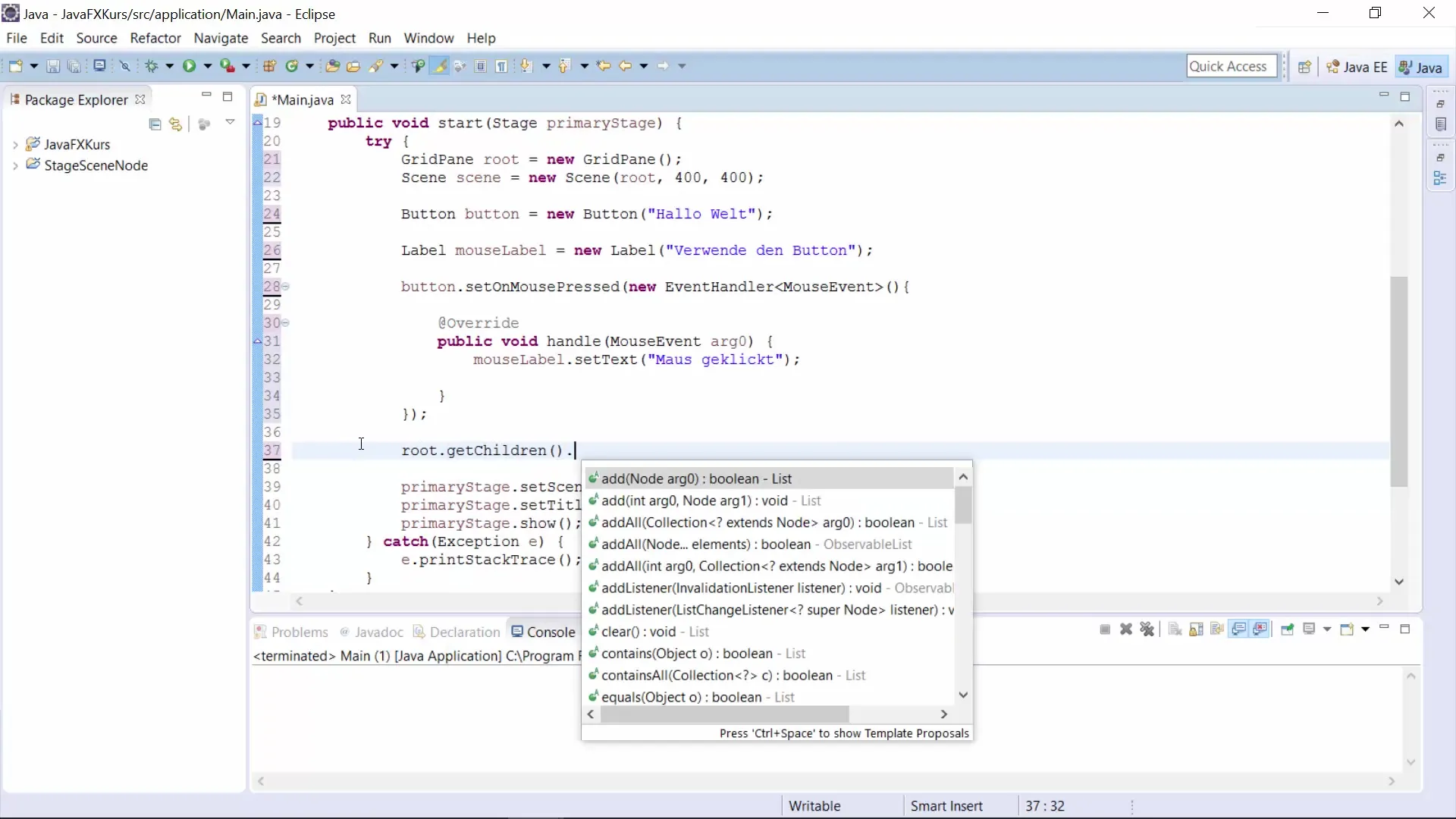
Step 4: Add mouse events
In addition to the click event, implement further mouse events like setOnMouseEntered and setOnMouseExited. These events notify you when the mouse enters or exits the button. Change the text of the label accordingly to reflect this.
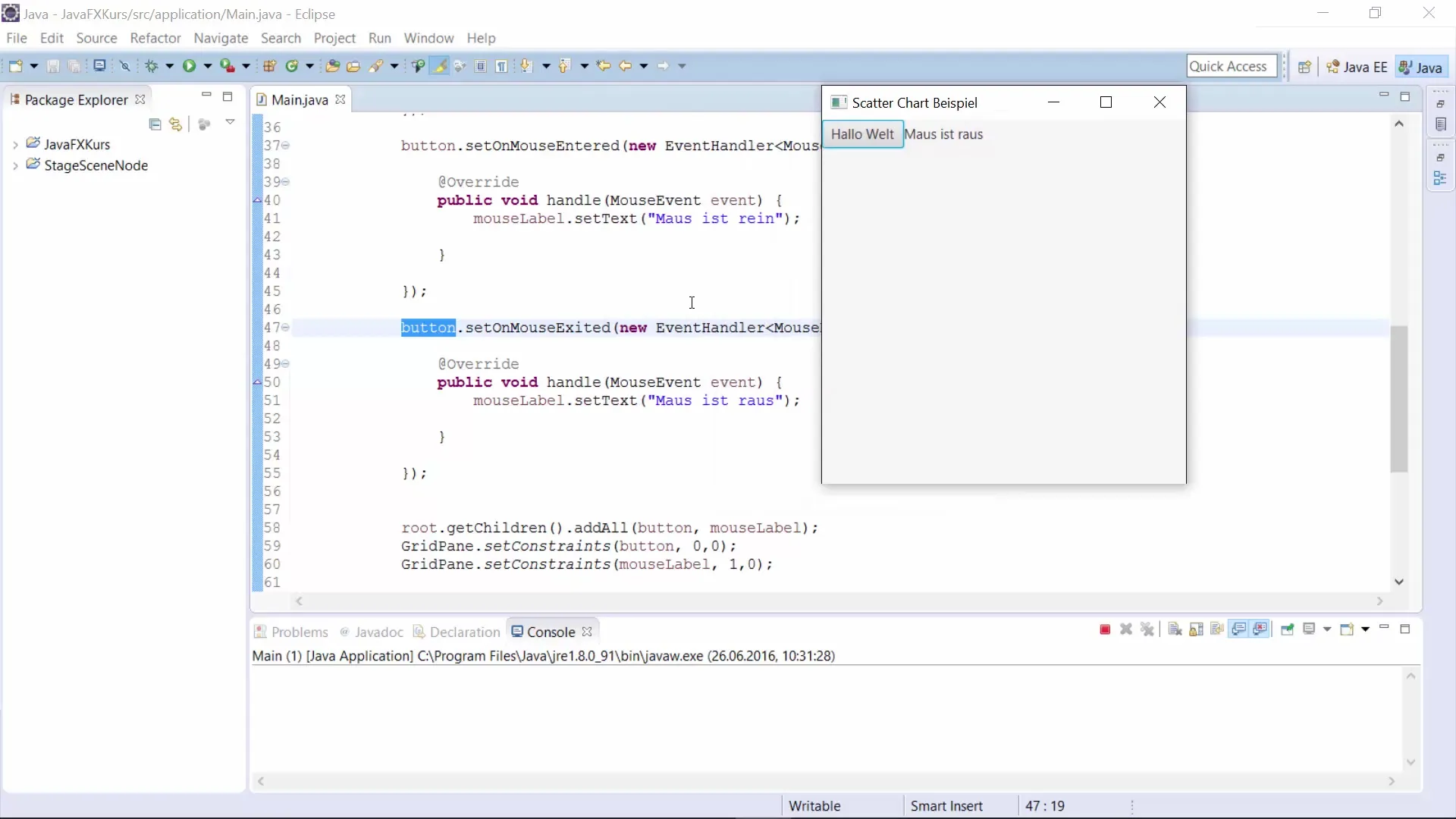
Step 5: Insert a TextField
Add a TextField so that users can enter text. This will help you demonstrate additional key events. Place it in a suitable position in your GridPane.
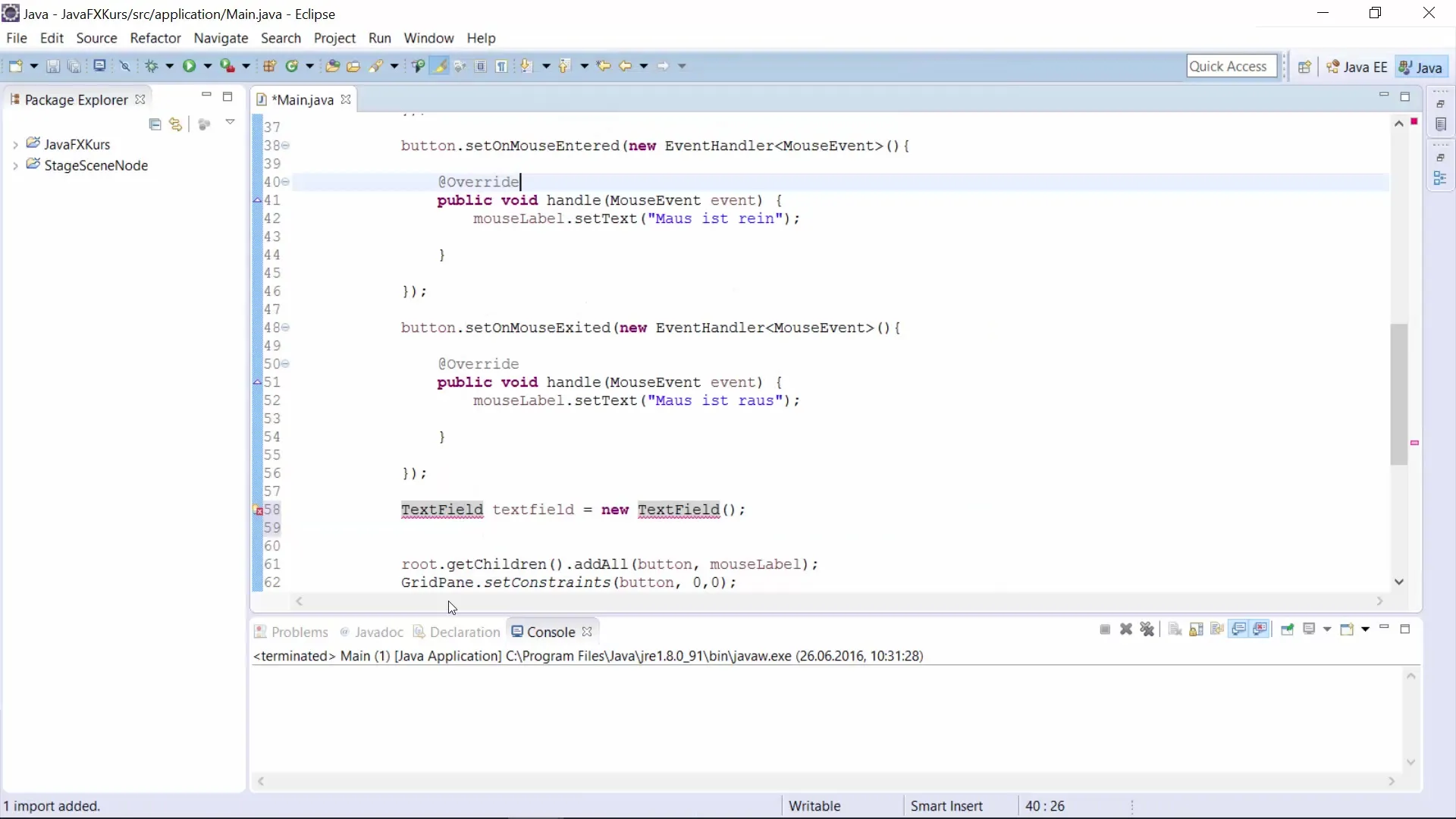
Step 6: Implement key events
Create event handlers for key inputs to respond to user actions. Implement setOnKeyPressed and setOnKeyReleased to determine when a key is pressed or released. Use event.getText() to get the text of the pressed key.
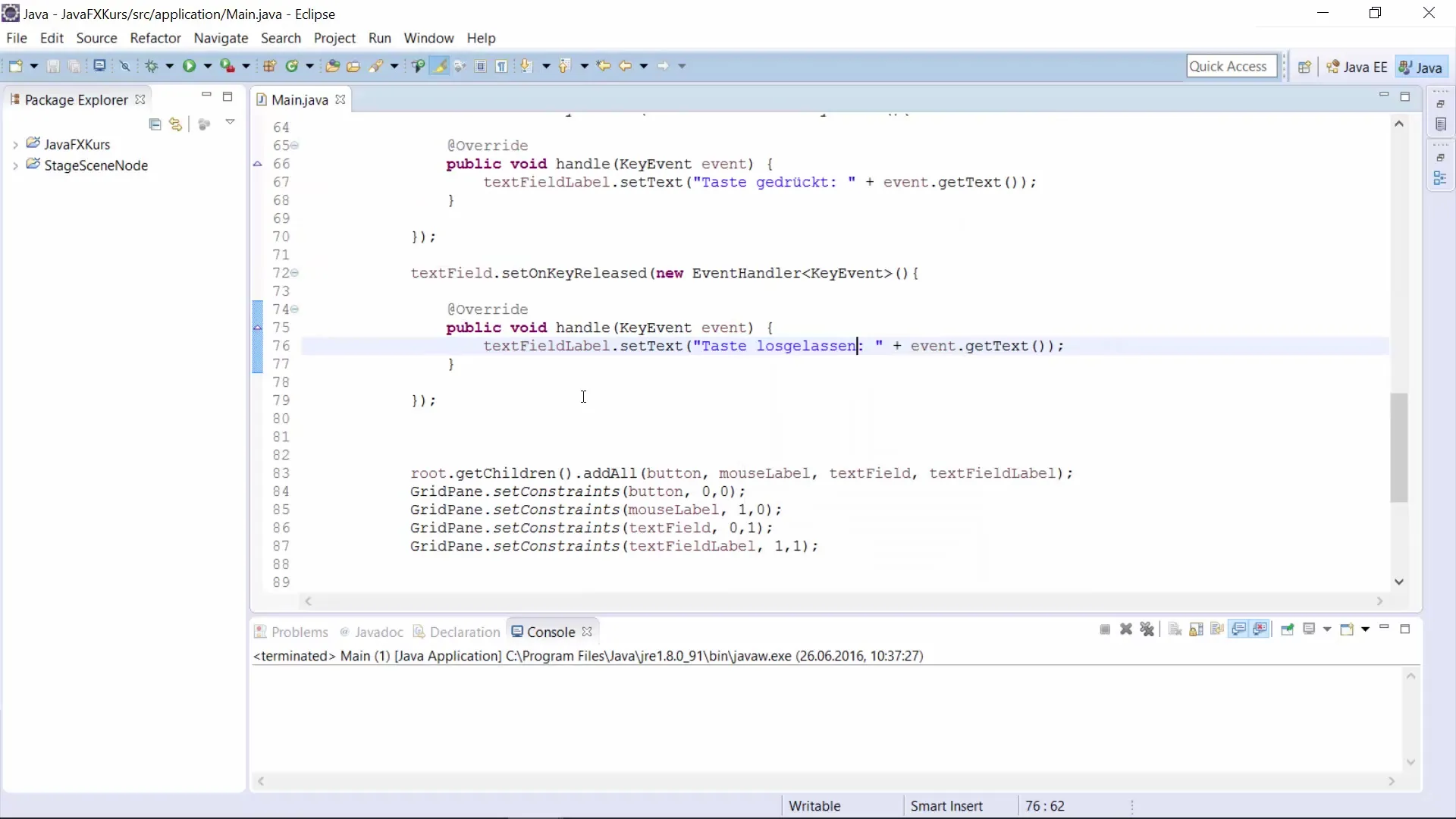
Step 7: Adjust the layout
Ensure that buttons, labels, and TextFields are positioned correctly in the GridPane. Make sure the arrangement remains clear by adjusting the GridPane constraints accordingly.

Step 8: Test the application
Test the application by moving the mouse over the button and clicking with the mouse. Also, check the functionality of the TextField by pressing and releasing various keys. Display the corresponding texts in your label to see the results.
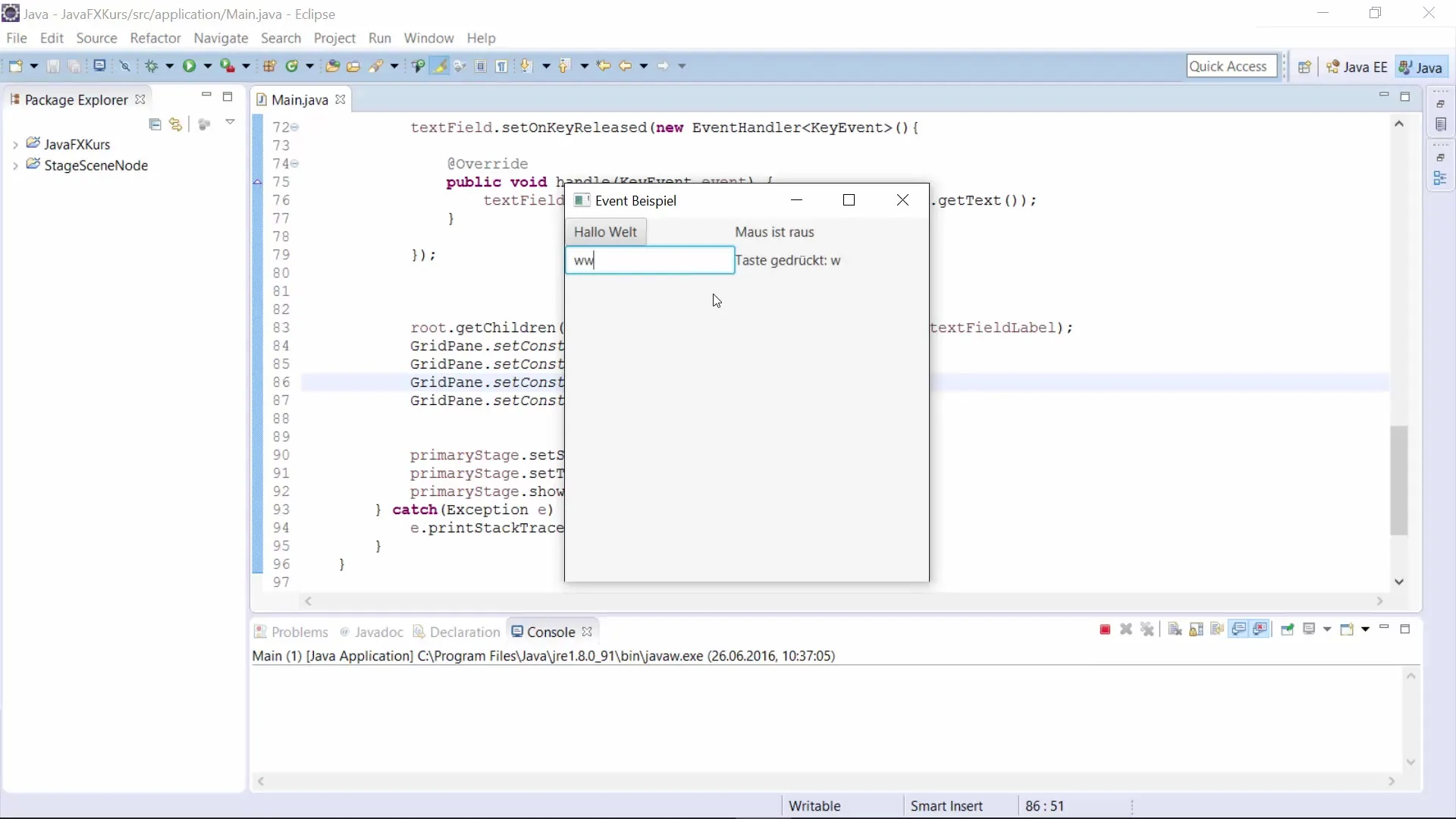
Summary – JavaFX: Events and Event Filters for Interactive GUIs
You have learned how to implement mouse and key events in JavaFX and efficiently utilize them for interactive GUIs. With simple event handlers, you can respond to user actions, thus creating a dynamic user experience.
Frequently asked questions
How do I add events in a JavaFX application?You add events by specifying event handlers for the respective UI elements, e.g., setOnMousePressed.
What are the most common events in JavaFX?The most common events are mouse events (e.g., MousePressed, MouseEntered) and key events (e.g., KeyPressed, KeyReleased).
How can I use multiple events for the same element?You can add multiple event handlers for the same element by defining the different event handlers one after the other.


